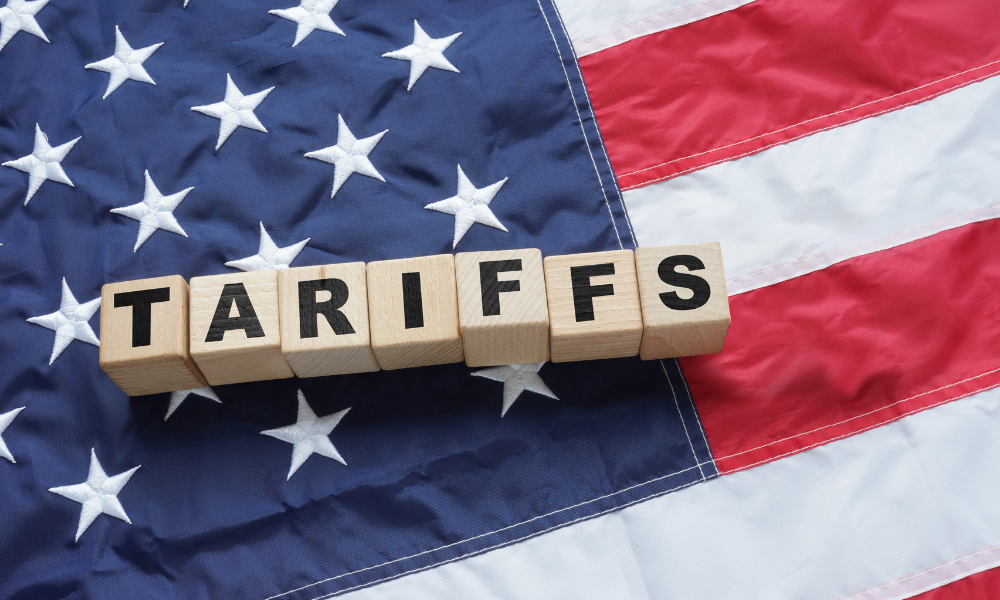

Buying a car made outside the US will be more expensive from next week as President Trump has slapped a new 25% tariff on foreign auto imports from April 2.
In an address Wednesday, the president signed an executive order to impose the “permanent” levy with “no exceptions” as part of his “Liberation Day” tariffs which he says will right the unfairness of international trade with the US.
But while the announcement was made after the market closed, traders had already decided they were not happy and the S&P 500 ended the session down 1% with Magnificent Seven tech mega caps leading the reverse charge; the Nasdaq ended more than 2% lower and the Dow Jones Industrial Average fell 0.31%.
The downbeat tone led to weakened performance in Asian and European markets while US futures were slightly lower early Thursday. Gold climbed to near its record.
Messaging around tariffs remains confusing for business and investors. It was only last weekend that signals suggested there may not be sector-specific tariffs, or at least not on April 2, but that changed with Wednesday’s announcement.
Trump said that lumber tariffs would be announced next week but that semiconductors and pharmaceuticals would be addressed later.
But there was also a changed tone from the president regarding reciprocal tariffs.
“We’re going to make it all countries, and we’re going to make it very lenient. I think people are going to be very surprised. It’ll be, in many cases, less than the tariff that they’ve been charging us for decades,” Trump told media gathered in the Oval Office.
As countries began digesting the latest news and working on responses, the president later issued a warning to Canada and the EU, who have been driven closer since the start of the trade war, that if they collude to harm the US they would face consequences.
“If the European Union works with Canada in order to do economic harm to the USA, large scale Tariffs, far larger than currently planned, will be placed on them both in order to protect the best friend that each of those two countries has ever had!” Trump posted on Truth Social.
With the scale of tariffs not yet known, nor is the likely impact of the Trump administration’s trade policy, or how the Fed might react with interest rates.
The chair of the Minneapolis Fed, Neel Kashkari, said Wednesday that with the potential for rising inflation and/or a slowing economy, the Fed should "just sit where we are for an extended period of time until we get clarity."
Meanwhile, a survey by Bloomberg shows that the Fed’s preferred measure of underlying inflation, the personal consumption expenditures price index excluding food and energy probably rose 0.3% in February after rising in January. The annual pace is estimated to be 2.7%.
“Monthly core PCE inflation likely rose to 0.35% in February (vs. 0.28% prior), double the pace consistent with the Fed’s 2% target. Price increases across goods, health care, and financial services more than offset declines in other sectors. Given firm inflation and solid spending, the Fed’s decision to hold rates at the March FOMC meeting and revise up inflation forecasts will likely appear justified,” wrote Anna Wong, Stuart Paul, Eliza Winger, Estelle Ou and Chris G. Collins, Bloomberg economists.

It's a showdown for the ages as wealth managers assess its impact on client portfolios.

CEO Ritik Malhotra is leveraging Savvy Wealth's Fidelity partnership in offers to Commonwealth advisors, alongside “Acquisition Relief Boxes” filled with cookies, brownies, and aspirin.

Fraud losses among Americans 60 and older surged 43 percent in 2024, led by investment schemes involving crypto and social manipulation.

The alternatives giant's new unit, led by a 17-year veteran, will tap into four areas worth an estimated $60 trillion.

"It's like a soap opera," says one senior industry executive.
RIAs face rising regulatory pressure in 2025. Forward-looking firms are responding with embedded technology, not more paperwork.
As inheritances are set to reshape client portfolios and next-gen heirs demand digital-first experiences, firms are retooling their wealth tech stacks and succession models in real time.
